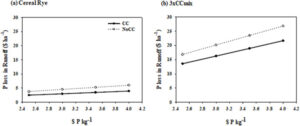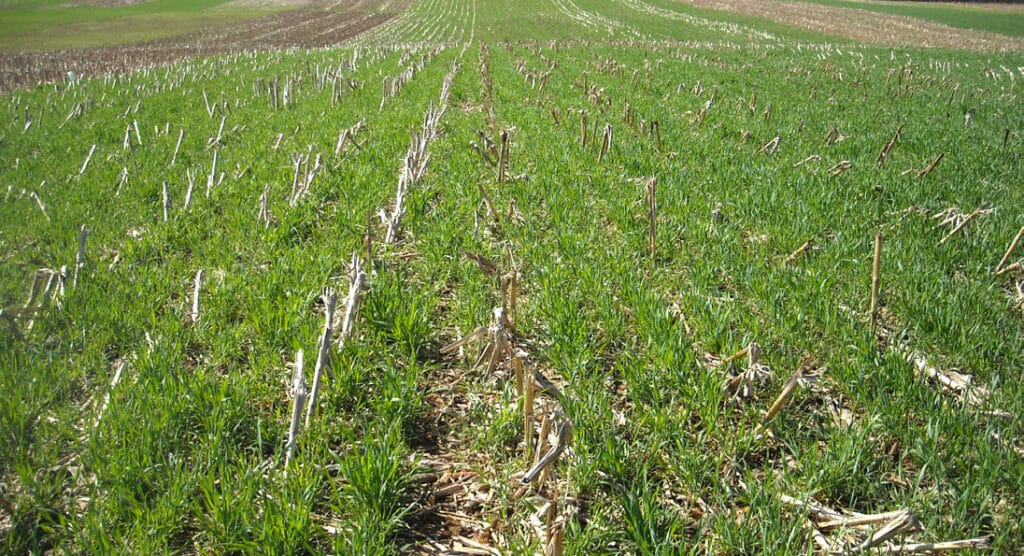The benefits of cover crops on row crop acres have become increasingly well-known. Improvements in soil organic matter, weed interference, and soil fertility have been touted for years along with an increase in soil water holding capacity. Decreases in soil erosion, nutrient runoff in surface waters, and soil compaction are also benefits of implementing cover crop practices on farm ground. With all the benefits, are there any apprehensions to consider when using cover crops in conservation plans?
Researchers from the University of Missouri’s Northern Missouri Research, Extension, and Education Center (@muextension) Kelly A. Nelson, PhD, and Gurbir Singh, PhD, worked in collaboration with Gurpreet Kaur, PhD, and Morgan P. Davis, PhD, from the School of Natural Resources, University of Missouri and Harpreet Kaur, from University of Idaho to determine what considerations should be taken into account.
Cover crops can be especially beneficial to claypan soils as they can improve phosphorus (P) cycling by reducing P losses through water runoff and adding P nutrition to a rotational crop. The study referenced in this update examined the impact of cover crop monoculture and mix of cover crop species on P losses from fertilizer application. The study also established a P balance in the covered soil compared to no cover crop at all.
The study found that the cover crop 3x mix (wheat, radish, and turnip) had “no effect on total phosphorus and dissolved phosphorus concentration or load in 2019 and 2021.” The monoculture cover crop of cereal rye reduced total phosphorus and dissolved reactive phosphorus load 70” and 73%, respectively, compared to the acres with no cover crop. Therefore, the selection of right cover crops is critical for managing nutrient loss.
Soil moisture, temperature, and net precipitation from the time of fertilizer application until the cover crop termination impacted available soil phosphorus pools. Differences in the cover crop species affected P uptake, cover crop decomposition, and subsequent P loss in surface water runoff.
Overall Takeaways
The P budget showed an advantage of planting cover crops over no cover crops in reducing P losses from the time of fertilizer application until termination in the spring (Figure 1). However, based on P uptake and runoff losses, the 3x mix and cereal rye had $23-38 ac-1 lower gross margin values compared to no cover crops which justifies cost-share for unrecovered expenses, and; this research recommended avoiding a surface application of P on frozen soils as it can result in increased P loss in runoff even in the presence of cover crops.


Figure 1. Economic value of phosphorus (P) lost in runoff with cover crop (CC, solid line) and without (NoCC, dashed line). Black lines are the loss following cereal rye (CR) and the red lines are the loss following a 3xMix (wheat, radish, & turnip) of cover crops. The fertilizer cost that was used ranged from $0.50 to 0.80/lb P2O5.
This study was funded by the Missouri Agricultural Experiment Station and promoted by the Missouri Fertilizer Control Board (MoFCB). MoFCB is directed to “pursue nutrient research, educational, and outreach programs to ensure the adoption and implementation of practices that optimize nutrient use efficiency, ensure soil fertility, and address environmental concerns with regard to fertilizer use extending the results of the fertilizer experiments that may be of practical use to the farmers and agribusinesses of this state.”
Learn More
Information in this update was obtained from the journal publication on Science Direct. To read the full publication, click here.
If you have any questions, please reach out to Andrea at arice@mo-ag.com or by calling (573) 636-6130.

